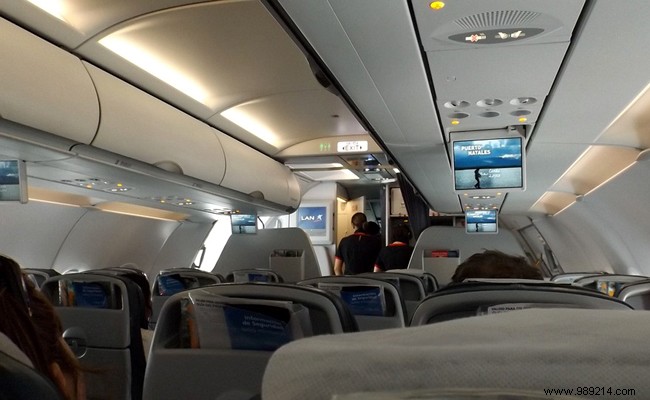Cabin baggage, that is to say the one you are allowed to take with you on the plane, is very useful for long plane trips because it allows you to have your small essentials close at hand. , magazines, phone and laptop, bottle of water, etc., and papers.
It is also essential when you are leaving for a short time and you do not want to carry a bigger suitcase that you must check in the hold, or when you travel with low cost companies which surcharges for checked baggage. Be careful, however, because very specific rules govern cabin baggage with regard to their size and content.

There is no standard common to all airlines regarding the maximum size and weight of cabin baggage. On scheduled flights, however, the maximum dimensions allowed are generally 55 cm high, 35 cm wide and 20 cm deep, including handle and wheels. The weight of your cabin baggage, combined with that of an accessory such as a handbag, laptop bag, camera, etc., must be between 12 and 18 kg. Cabin baggage can be a small suitcase, a bag or even a backpack.
But it is important to check with your own airline which can vary these dimensions and weights, especially low cost companies. Otherwise, you may be required to pay a supplement if you do not respect the rules established by your company regarding the size and weight of your cabin baggage. Likewise, be careful if you have to connect during your trip with different companies, which may have different rules for cabin baggage.
Objects that can be taken into the cabin of an aircraft, whether in cabin baggage or in any other bag, are subject to different controls and measures than those placed in the hold. Airlines have an obligation to inform their passengers of the regulations in force. Note:some companies have the option of imposing stricter rules than the general regulations, and in particular requiring, for reasons of security or lack of space, that cabin baggage be transported in the hold. Be careful, however, because certain items authorized in the cabin are not allowed in the hold, such as spare lithium cells or batteries, e-cigarettes and devices intended to supply or recharge other devices, called "powerbanks". », for example.
For safety and security reasons, certain items are strictly prohibited in the cabin. These are all sharp objects such as knives, cutters, razors, etc., weapons, flammable and explosive products (also prohibited in the hold), working tools (drill, saw, hammer, etc. .), stun devices such as tear gas, and in general all those that can be dangerous.
Liquid products are subject to a specific restriction. They must be transported in a closed transparent plastic bag of a format of approximately 20 cm by 20 cm. Products packaged in the form of bottles and tubes, such as shower gels or perfumes, must not exceed a maximum of 100 ml each. Baby products are not affected by these restrictions to be transported in cabin baggage.
To be sure that you do not have a prohibited item in your cabin baggage and to find out the complete list, classified by theme, of regulated products in the cabin, the Directorate General for Civil Administration (DGAC) provides travelers with an application called Airbag, useful to consult before any plane trip.